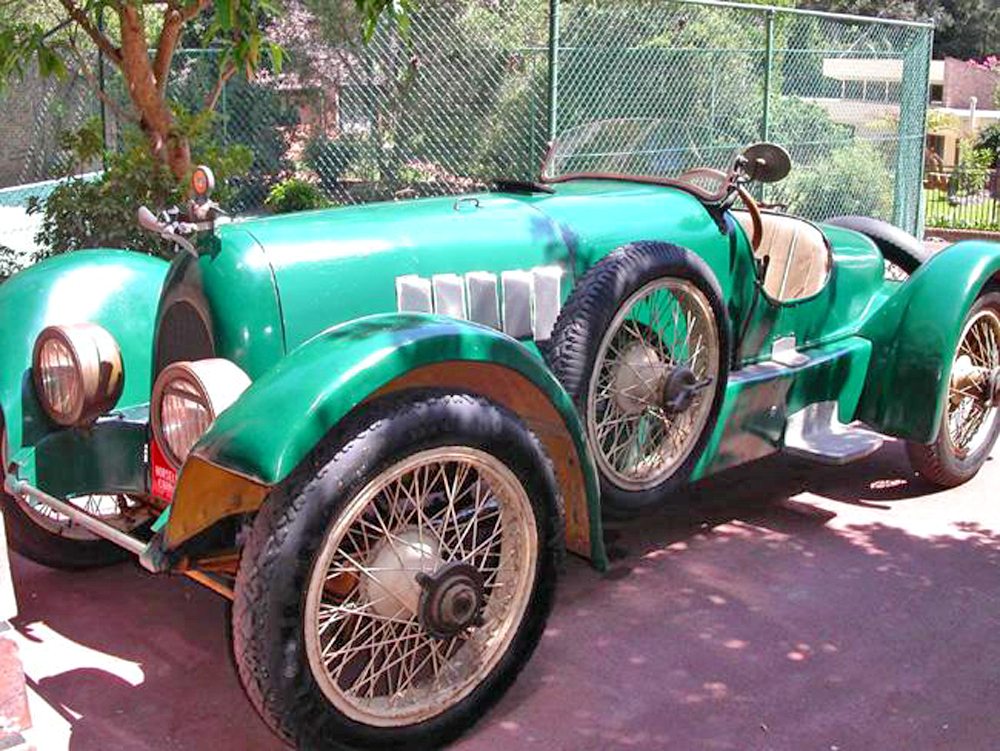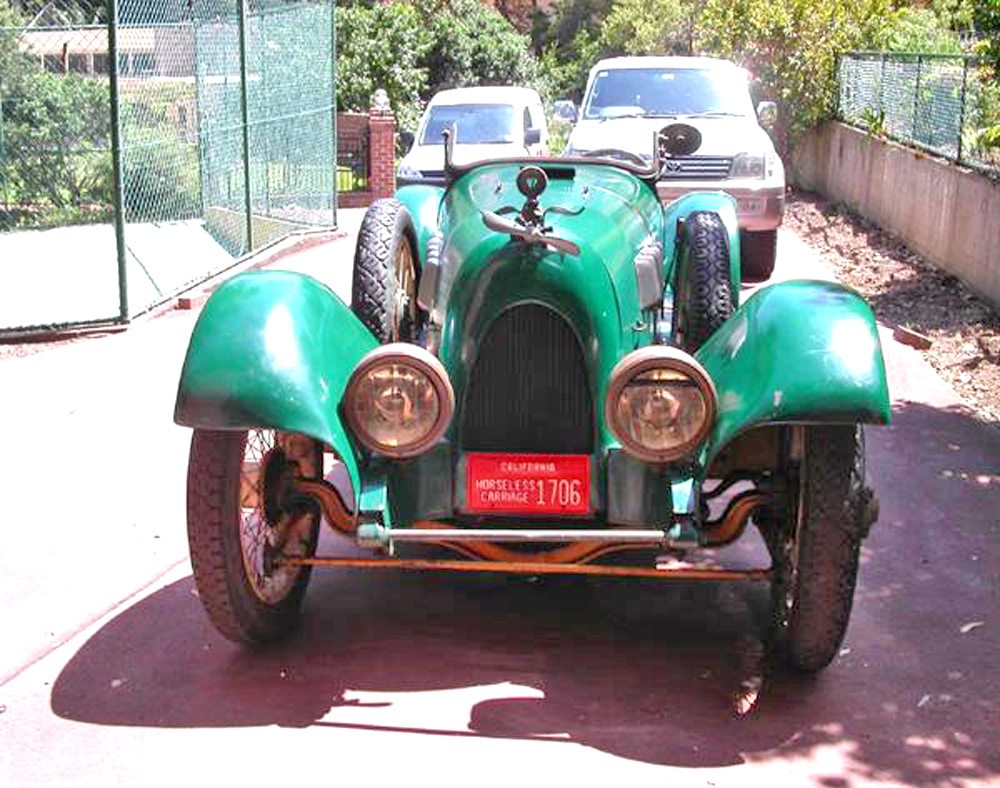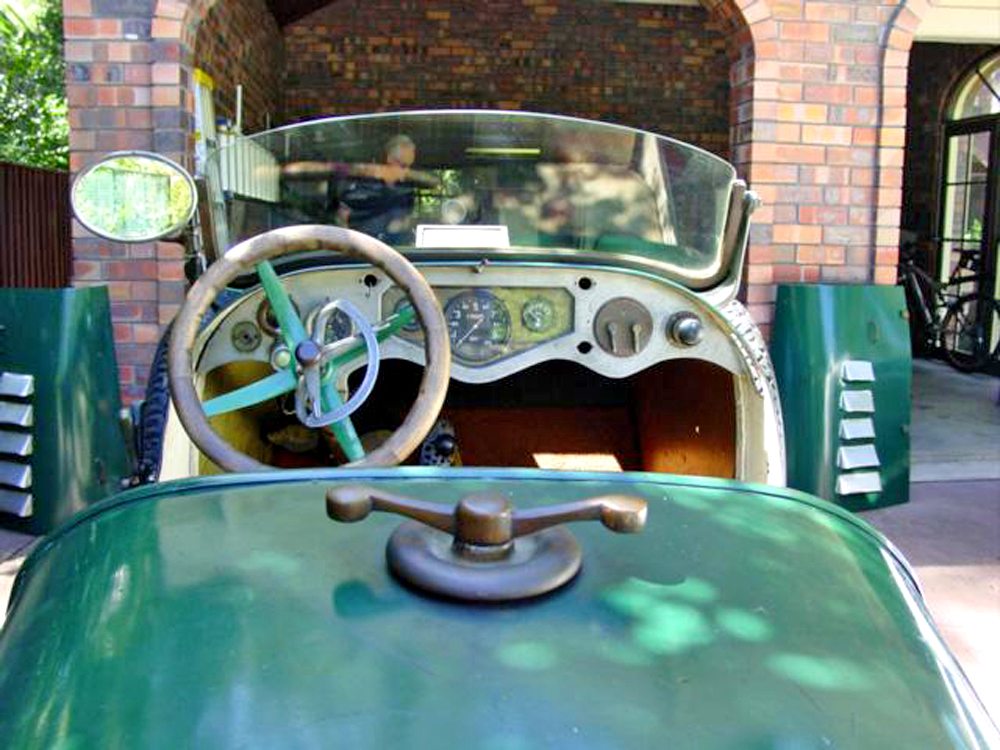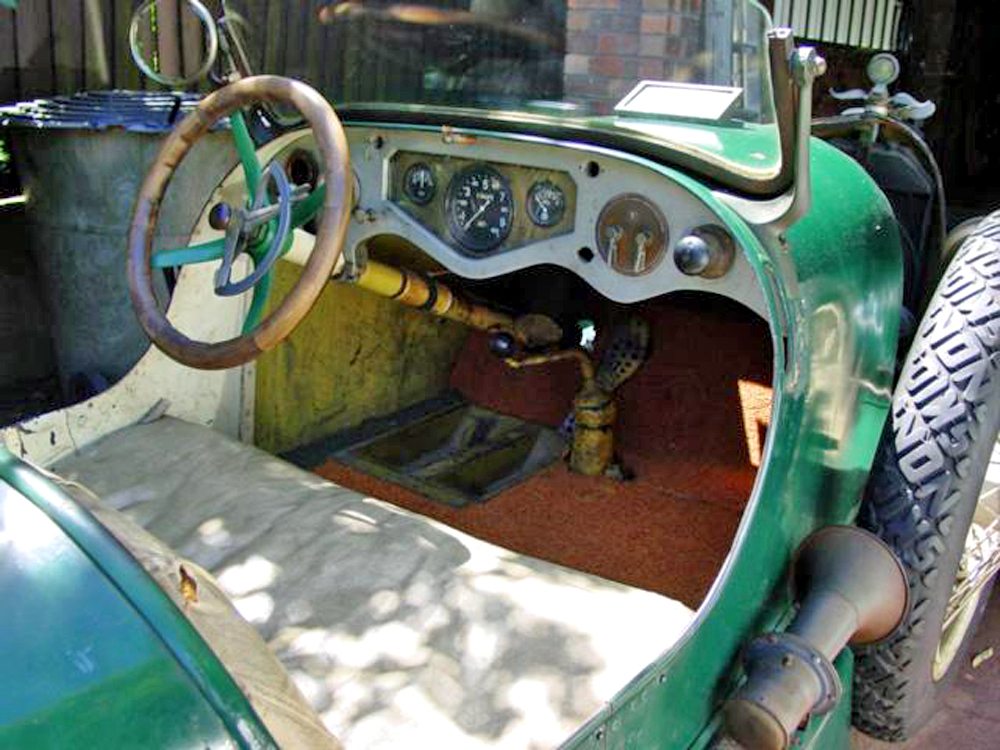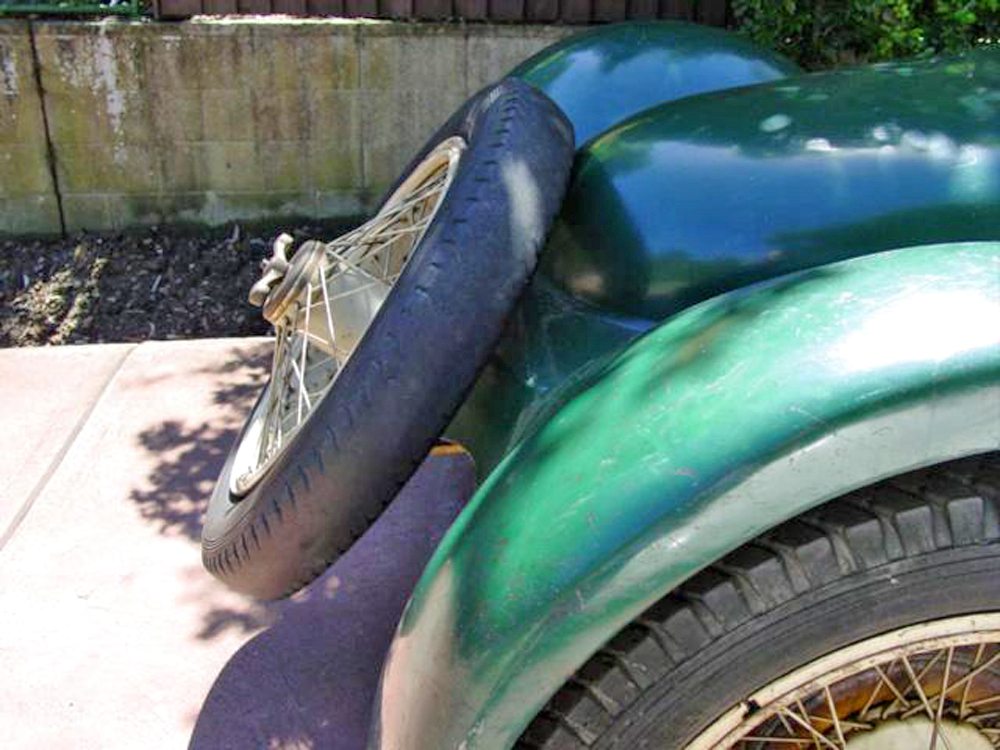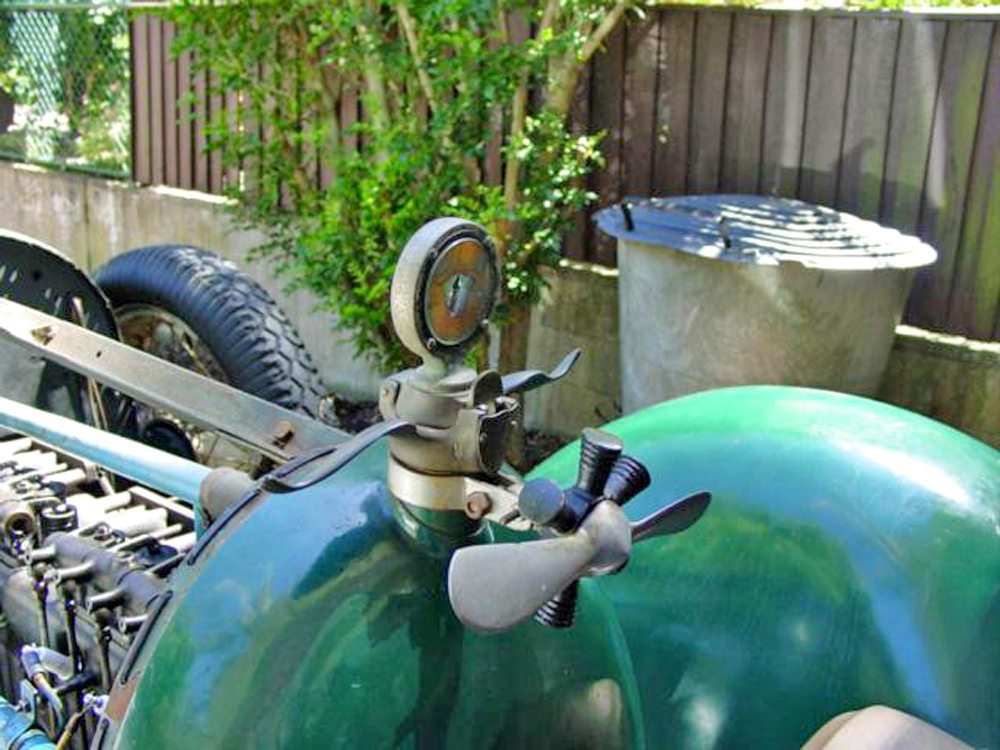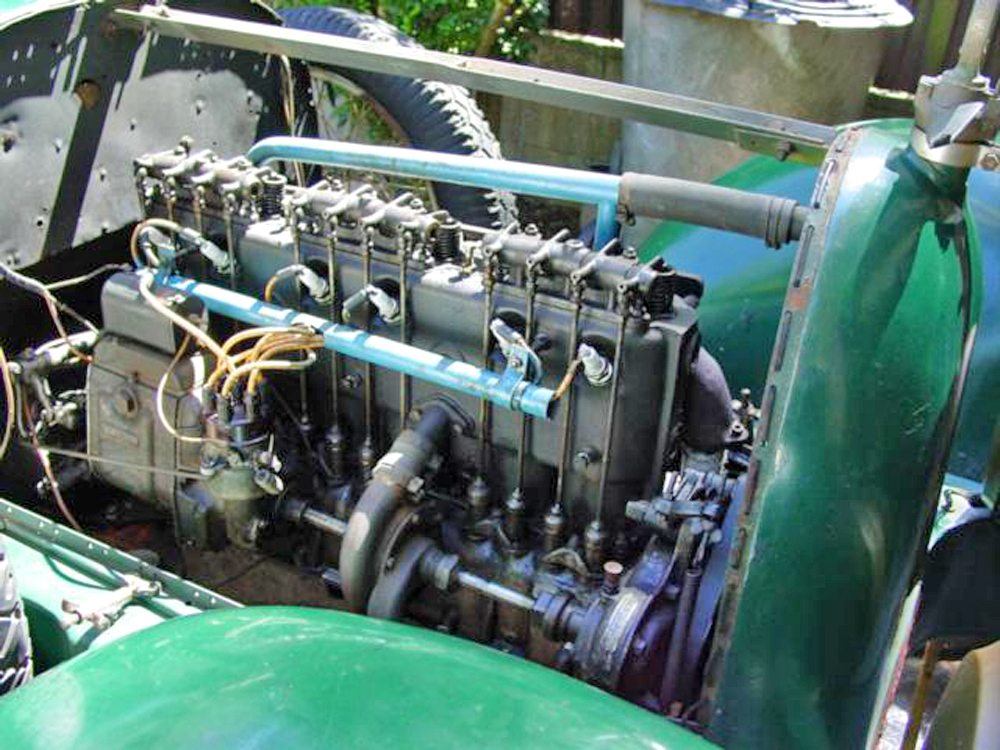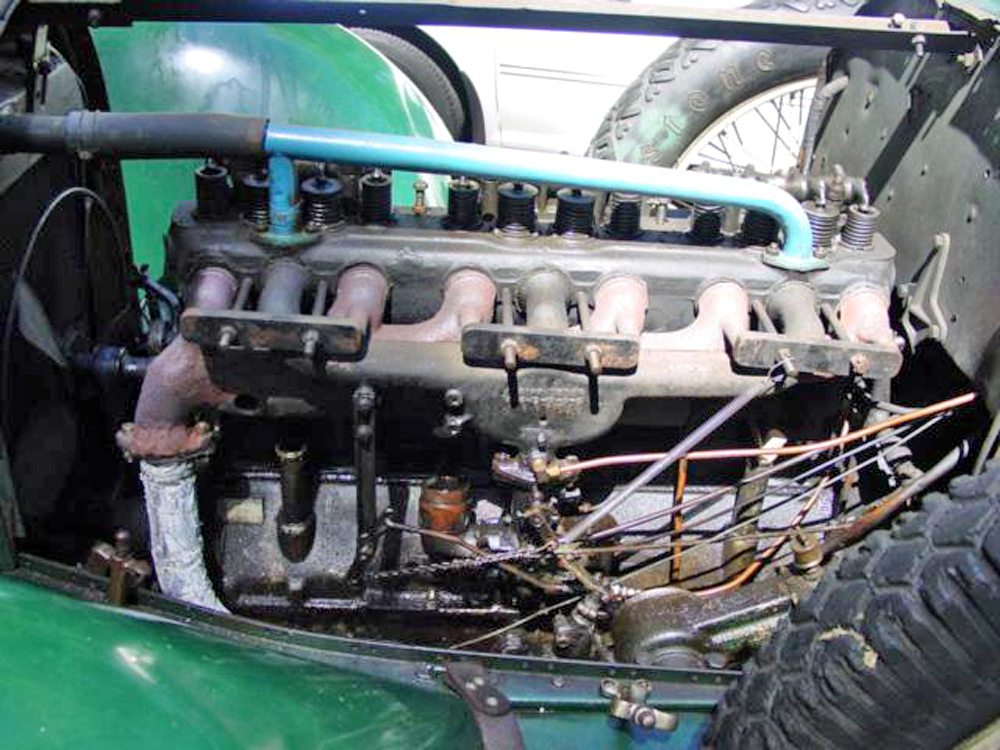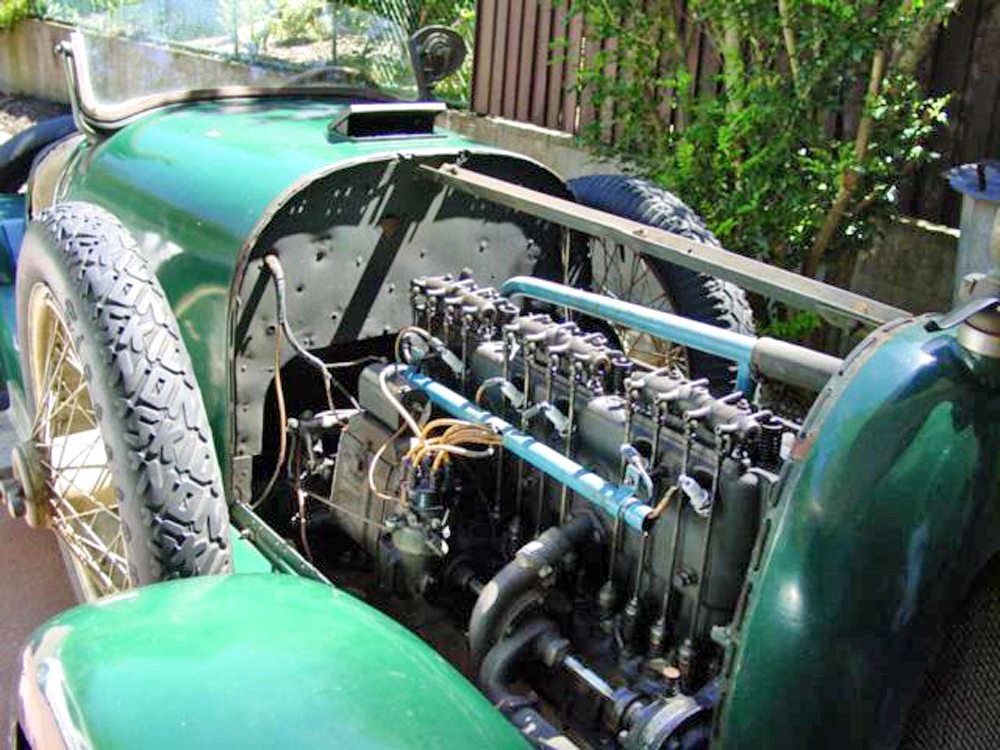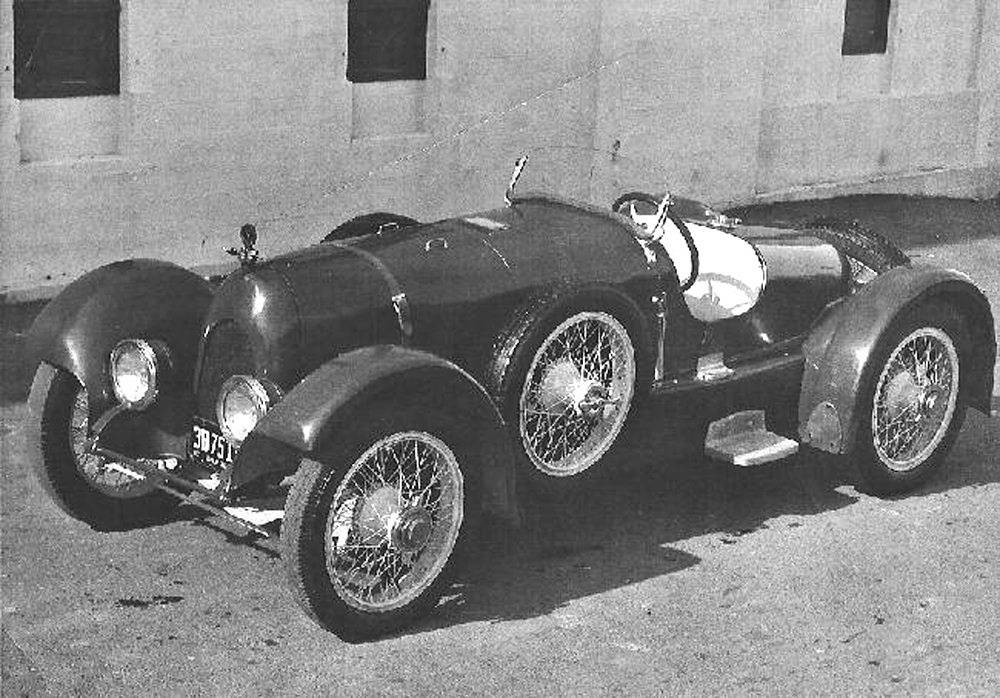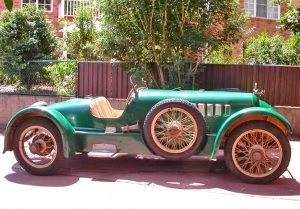 By John Gerdtz with the kind permission of Warren and Judy Tanna and acknowledgement to the Buick ‘Bugle’ for the historical text information. Photos by courtesy of Warren Tanna.
By John Gerdtz with the kind permission of Warren and Judy Tanna and acknowledgement to the Buick ‘Bugle’ for the historical text information. Photos by courtesy of Warren Tanna.The original builder of this most interesting vehicle was a French-man named William Moal who emigrated to America after falling in love with a girl from Berkeley, California. She had met William whilst on a trip to France in 1910.
Moal, who had trained as a wheelwright, settled in Oakland, California, starting a business, mainly building custom radiators, but also dabbling in coach building and race car fabrication.
John Battistini contracted Moal to build this special sports using Buick mechanicals. Legend has it that four such cars were built. Certainly there were two as evidenced by the well documented 1922 Battistini Buick pictured in “70 Years of Buick” by George Dammann and also in the wonderful article about it and this car in “The Buick Bugle”, October 1999.
Our subject Buick was known as “the Green Hornet”, probably because of its paint colour, and was discovered in a wrecking yard in California in about 1950 by Bud Lundell who was an enthusiast and collector of early and classic autos. Bud restored the car and was assisted with guidance and information from a craftsman who was employed by William Moal and had worked on this car when it was first constructed.
Regretfully no one knows what the original motivation was to have these cars built, although there is much speculation. The “Bugle” report about the other Battistini Buick speculates about the possible purpose of the second large fuel tank that has a large round opening with a threaded cap, large enough maybe, just maybe, to have allowed a few bottles of moonshine to slip down it once or twice in order to be transported, delivered or relocated, as it were, sometime during the “20’s”. Well let’s add to the speculation as The Green Hornet also has a second large fuel tank in the boattail with a large round hole and screw cap just behind the seat. I was able to comfortably get my arm through this filler opening and it is easy to speculate that this tank could hold a dozen bottles or more.
In 1992 Bud Lundell gave The Green Hornet as a wedding gift to his daughter Judy and new son-in-law Warren. Warren, being Australian, brought his new bride and the wedding gift back to Australia in the same year. The Green Hornet was put into storage and remained in storage until very recently when it was wheeled out, cleaned out, cleaned up, refueled and fired-up. Although needing some more TLC and a good tune-up it moves in and out of the garage under its own power but will need to be registered before heading out the front gate.
Warren and Judy were kind enough to allow a couple us to climb in, under, over, and out of this most extraordinary Buick. What a machine, low and sleek, with an aggressive stance, three spare wheels and looking nothing like any other Buick in Australia.
For the technical minded the following describes how we saw the car:-
The Green Hornet is a purpose built speedster and demonstrates the expertise of the designer/builder together with his creative talent. One of possibly four built, (at least one other is known to exist today), it was most likely built some time after 1922 but during the mid 1920’s.
The other existing car is reported to use a 1922 Buick engine, transmission and running gear and is mounted on Buick’s 124” wheelbase chassis of that year. The subject car is based on 1918 Buick mechanicals and running gear and has a wheelbase of nearly 120”. This is a little more than the 118” wheelbase used in 1918 but is most likely accounted for by the use of a non standard front axle and the stretch that comes with flattening the spring settings to lower the car. Comparing pictures of the two vehicles, the body work on both seems to be near identical except for the radiator cowls. There is no evidence of a chassis number at the front although sheet metal covers the expected location and the rear chassis overhang has been removed, shortening the chassis.
With the engine No 349234 it is identified as 1918, that is the crankcase casting and bottom end, however, the block casting is later. This is identified by the valve gear with the rocker assembly in three sections. This change was introduced on the “K” series (released in 1919) and carried through until 1923. It is believed the car was restored in the 1950’s so the later engine block could have been introduced during this restoration. Buick used the same 6 cylinder chassis, engine and drive train from 1918 through 1923. There were minor upgrades like the valve gear but most mechanical parts were interchangeable through this period.
There is no bell housing bottom cover so from underneath it is easy to see that the flywheel has been lightened by some considerable amount and there are modifications to the external oil way plumbing on the sump.
Apart from the front axle assembly and carburettor (make unknown but not Marvel as fitted to Buick) and except for the later engine block, all other mechanicals are consistant with 1918 Buick including drive train and rear suspension. The spring settings appear to have been lowered in keeping with the speedster design and the front axle, of unknown origin, is of the double drop type with the tie rod assembly placed in front of the axle, not a common practice for this era.
Stating the obvious, the body is an all steel fabricated sports special with advanced design styling of the early 1920’s sports cars.
The car is fitted with “Houk” wire wheels of the lock rim type and is shod with 33 x 5 high pressure tyres. These 23” wheels are of a size and type consistant with those fitted as standard equipment on the big, up-market Buick sports roadster and tourer released in late 1922. Houk wire wheels were available on Buicks to customer order in earlier years, however, they would have been at least 24”, one size larger. The 1918 Buicks used beaded edge tyres size 34 x 4.
My earlier suggestion that the car was built after 1922 is based on the designer/builders use of these wheels.
Steering box and shaft assembly is consistent with 1918 Buick, however, the steering wheel has been reduced in diameter from 18” to 15”. Head lamps and tail lamp are not Buick and the non standard cast aluminium dashboard has a collection of period gauges including Buick’s standard 1918 oil sight gauge. The ignition switch is Buick but early 1920’s.
The conclusion is that the car is predominantly built using 1918 Buick six cylinder mechanicals but, because of the wheels used, build date would be sometime after 1922. Different car clubs have differing dating criteria, but to me it should be classified as 1918 Buick “E” series.
Webmasters Note:The last picture is believed to have been taken about 1953, soon after it was restored. It is interesting to note that the car at this time was fitted with Buick headlamps of the type used on models made from 1924 to 1927. Also there is no rear vision mirror, radiator cap propeller, or bonnet side vents all of which must have been added later.
Posted 05/2004

